"With a watering can and a notebook ..."
And now, reviewing what I copied from the archive, I find more and more new military aspects and themes.
I offer you, dear readers, some notes and notes of Ivan Alexandrovich. Thanks to them, it is possible to understand well the work of editors in the war years.
22 June 1941 Narcissus met in Ashgabat: a year before the start of the war he was drafted into the army and sent to Turkmenistan. Here he is also a correspondent, he worked in the Frunzenets newspaper. And already 23 June, along with brother-soldiers, headed under the legendary Yelnya, where he received his baptism of fire ...
“... I happened to go through a war as a military journalist, mainly as a photojournalist, served in different formations, been on different fronts, often became a witness or participant in various military events, met many people. Correspondent work - and this is natural - introduced me to people of high duty, honor, glory ...
... Our division newspaper “For Victory!” Began to be published from the very first day of our unit’s entry into battle. We did not have any zincographs for making clichés, and I completely devoted myself to literary work. We “populated” the pages of our circulation with the best people, showed the bravery and heroism of the soldiers with a printed word ... ”
... Today, on the table in front of me is the number of our soldier’s newspaper from 27 of September 1941 of the year which has turned yellow from time. Here are the words with which the front line of this issue begins: “For three months the Red Army heroically restrains the frenzied onslaught of the German fascist hordes. A distraught bloodsucker Hitler throws into the battle more and more divisions. Hundreds of thousands of Nazi soldiers and officers fallen from the powerful blows of the Red Army cannot sober up this robber. He yearns for new victims, he yearns for human blood ... ".
The brave and skillful warriors rise from the pages of the newspaper to their full heroic height: the Komsomol member shooter Udalov, the gun commander, senior sergeant Komsomol member Reznikov and many others. Under the heading "Heroes of the Great Patriotic War" in the essay written by my fellow writer, journalist, Komsomol member N. Orlov, the feat of a twenty-two-year commander of a machine-gun company, lieutenant Ivan Doroshenko is shown. In battle, he brilliantly controlled the fire of his company, and at a critical moment he himself took up the machine gun. With a broken mine, the lieutenant was thrown aside and badly wounded. Despite the severe pain, he returned to his place. The front ranks of the Nazis were destroyed, the back began to crawl back. When the danger had passed, Lieutenant Doroshenko was taken to a field medical center ...
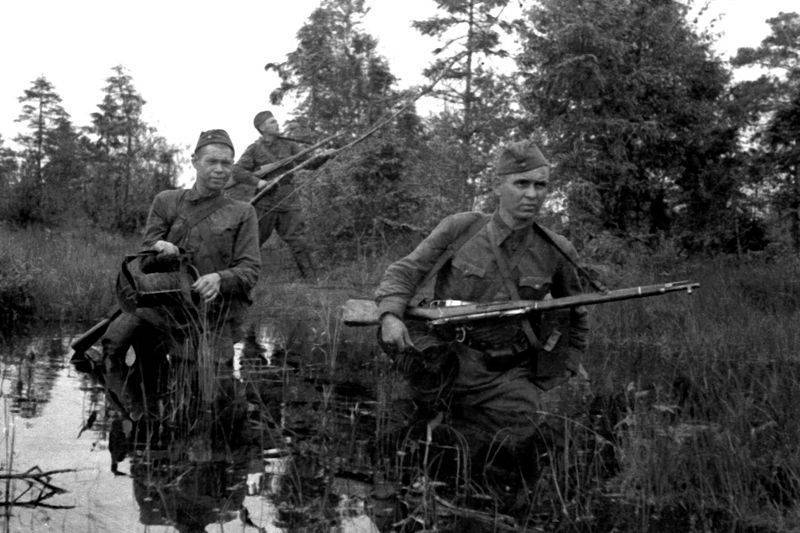
... Under Yelnya I received my baptism of fire. Here, on the front line, he was wounded by a bombshell. In the field hospital, the surgeon took out a few fragments from the body, and I was sent to a rear hospital. On the road, in an ambulance, I decided: I would not go to the hospital. And he returned to the editor. He did not tell anyone about the injury, lay down on the ground under a tree, covered himself as best he could with his greatcoat and immediately fell into a drowsy, lead state. Apparently, I moaned. My friend Orlov, a Komsomol member, approached me, leaned over me and asked anxiously:
- Are you, Vanya, injured?
So in the editorial office I learned that I was injured. Of course, there was a case for the wounded man, to which I was very happy, and the staff assistant was treating me already. From this first wound, two fragments remain today ... "
In autumn 1941 years tank the brigade in which Narcissus served served in the 43rd Army, in the Maloyaroslavsky direction.
“... I had to take pictures in any conditions, in any weather: on the forced march, in enemy shelling. I remember such a case. It was necessary to urgently take a picture of several people from one part for the candidate's tickets. I photographed people near the bush. Suddenly, a mine arrived - it lay aside. The second is a little closer from our trench. Another soldier who stood up for posing, was not afraid of shelling. I wanted to bring a camera to shoot, but then the guys shouted:
- In the shelter!
And literally pushed us into the trench. Two or three seconds later, a deafening explosion was heard, lumps of earth fell on the overcoat. Everyone is alive. Nobody hurt. We got up from the trench to finish photographing. But where is the bush ?! From him, even the branches are left, only a funnel in its place. If the guys didn’t show decisiveness at that moment, there wouldn’t be these lines ...
... It was necessary to print photos at night in the huts, where the soldiers tired during the day of the fighting were sleeping on the floor, very tightly. Only the sentries at the outer door were awake, and I was in a corner built of two raincoats. In other cases, photo prints had to be shown in a frozen dugout, and then I “pulled out” them with warm breath ...
In 1942, Narcissus met frequently with Panfilov members, wrote a lot about them. I saw newspaper notes about snipers Abdybekov and Madaminov, Red Army soldier Kurinn, nurse Nurse Vale Panfilova - daughter of General Panfilov.
“... I clearly remember such a case. I walked towards the fighters on the front line, I had to photograph the best warrior-guardsmen from the Panfilov division. Passing through a small village, about eight kilometers from the town of Holm, near the village bath, I saw two girls washing the Red Army lingerie. They tried hard with might and main!
Has stopped. Said hello. I learned that they were local residents, they were doing laundry from morning until late evening.
I talked a little with the girls, took a picture of them, wrote down the names ... And walked my own way.
On the same day, this picture was placed in our soldier’s daily newspaper “Soviet Guardsman” with such a short caption: “The soldiers and commanders daily feel the care and help of the working people. In the photo: Komsomol member Olga Alexandrova (left) and Anastasia Stepanova washing clothes for the fighters. ”
With girls, I have not met. He assumed that they had never seen the photographs either, since the soldier’s newspaper was published only for military units.
It is not difficult to imagine my pleasant surprise when, more than three decades later, I received a letter from Alma-Ata in which there were such lines: “I applied to the editorial office of the newspaper“ Evening Alma-Ata ”, and here I was eagerly told your address. More than thirty years have passed. But I remember well those moments when you talked with us. On the same day, near the bathhouse, where we were photographed, we received our first baptism of fire. It was like this: the soldiers unloaded the boat with food for the Panfilovites. At this time, the German "frame" - a reconnaissance aircraft; when he flew away, then in about ten minutes an enemy mortar attack began. Mines exploded one after another. Thanks to that bathhouse: we lay near her from the opposite side of the shelling, and remained unharmed. But the three fighters who unloaded the boat were seriously injured. We girls helped bandage wounds. Soon I, then twenty, put on a military uniform and served until the end of the war as a medical orderly in the sanitary company of the 19 Guards Rifle Regiment of the Panfilov Division. Victory Day met in the Baltic States.
When the war ended, I married a brother-soldier, with whom I left for Alma-Ata, and live with him happily, happily. I already have two adult daughters ... "
In the 1943 year, in the spring, the 1 th mechanized corps, in which Narcissus served, made a march from the Kalininsky front to the Nizhnedevitsky district and merged with the Steppe front. Ivan Alexandrovich worked in the newspaper "In the battle for the Motherland!". The headquarters and the editorial office of the newspaper are located in the district center, while the neighboring villages have parts.
“... Our corps had just left the fighting and was on vacation. However, “rest” is not the right word, for everything was subordinated to preparing for the upcoming battles as best as possible. Every day and every hour was intense combat training ....
... At the approaches to Kharkov, our mechanized Krasnograd corps (he was awarded this title after our victory under this city - Krasnograd) freed 80 settlements from the Nazi invaders. I managed to capture many heroes of battles on film. Among those who showed courage in those days were corps anti-aircraft gunners, covering ground troops from enemy raids aviation. They shot down 36 aircraft shot down in the Kharkov sky at their own expense.
Near Kharkov, a tank platoon, commanded by Junior Lieutenant Shevket Osmanovich Abdul-Ogly, distinguished himself in battles. Not long ago I received a letter from him from the city of Kobuleti ...
I want to remember the good word of the sappers. I do not remember the time when they heard the command: “Follow me! Forward! ”, As it happened, for example, at machine gunners. But the sappers were often ahead, clearing the way. And then modestly reported: "The passage is ready!".
The military feat of the sappers was noted in our newspaper, the number of which I still have ...
... Understanding my “farm”, I came across a package with the inscription “In the battles for Belarus. 1944 year. Here I had a little bit of everything: some photographs, clippings of selected issues of our newspapers ... There was also the front (1 Belorussian Front) number of the Krasnaya Armiya daily newspaper, dated July 7.
Publication titles: “In Minsk”, “Troops Go Forward”, “Bypass”, “Tankers! Equalize the brave fighters of Captain Glukhov. " Expressive hat on the first page: “Our Kovel! Another city is returned to the Motherland! ”
I began to read the caption under the photographs of my work: “the tankers of the captain twice of the order bearer Bortovsky move to the starting line for the attack. The infantrymen rushed into the breakthrough made by tankers and started street battles in the village ”.
Yes, it was so. Fleeing under the onslaught of our tanks and motorized infantry, the Nazis set fire to the Belarusian village. Our machine gunners, pursuing the enemy, immediately broke into the burning village and, in revenge on the Nazis, destroyed them right there in the streets. Photos were taken by me in this setting ... "
Over the summer of 1944, the 1 corps, in which Narcissus served, fought for about a thousand kilometers. In total, the troops of the 1 of the Byelorussian Front (including the corps) liberated about 1200 settlements of Byelorussia ...
“... As soon as the battle in one village was over, children were the first to escape from the shelters. A group of kids ran to me. All in torn shirts from homespun cloth and each one has a piece of two-finger-sized plywood hanging on a string on a string. And on the tags with black paint, large double-digit numbers are painted.
- Why is this? Who put on you? - I asked.
Sprinkled answers:
- Damn the police! They were afraid to help the partisans from us.
- My brother Vasya did not wear, for that he was shot before our eyes.
- My neighbor Sergei lost the tag. Bile, died from beatings.
- We had no right to leave the village ...
I felt keenly how terribly many children survived during the fascist occupation. I took the tag off the younger boy, broke it with anger and threw it into the pit. The children were unusually animated, began to tear off the plywood, throw them ...
... On the pages of our newspaper there was always a place for front-line photographs, to which I was immensely pleased. I still had more pictures than I needed in the issue, and then the executive secretary of the editorial board, a graduate of Pioneer Truth, Captain Rubezhovsky suggested issuing the printed photo newspaper “To the Battle for the Motherland!”. This proposal was all we supported. The first issue of this newspaper I have survived. The sapper, foreman Alexei Krivoshchekov is smiling from the strip. Under another snapshot is told about the fighting of our machine gunners in a burning village. Next are photos of scouts, machine gunners. At the end of the room, a warehouse of vaunted German equipment was captured, turned into a pile of scrap by our soldiers. The path of our offensive in Belarus was littered with beaten German tanks, guns, cars ... "
The start of 1945 for the Narcissus Corps is participation in the Wislo-Oder operation. Our troops rush to Berlin ....
“... I, a journalist, did not have to look for warriors who distinguished themselves in the last battle: they were always there. The correspondent notebook was filled up with bright notes all the time. Major Vasily Filimonenkov, captain Pavel Bolotov, foreman Vasily Vlasov, private Alexei Zuev ... These are just a few of the names of those who were soon given the title of Hero of the Soviet Union.
... Unusual atmosphere reigned in the same German town where I was with my camera. Right on the street I saw a table, small, covered with red cloth. On the table is a glass of water. A Soviet soldier was sitting at the table. One of those who are rightfully called the protagonist of World War II. Before the soldier - a special book for registration. The soldier then wrote down the names and surnames, home addresses of the exhausted people around the table, the day before the liberated people. These were Russians, Ukrainians, Belarusians — those whom the fascists had forcibly driven into slavery.
And now - they are free. They are waiting for the hour when they board the train that will bring them home ... ”
Ivan Alexandrovich reached Berlin. At the door of one of the rooms of the Reichstag he saw a forgotten key. And he took to memory. The key did not pass the archive - left his family. And I think, dear readers, that for Narcissov he was not just a memorable trophy, but a key that opened the door to a peaceful life.
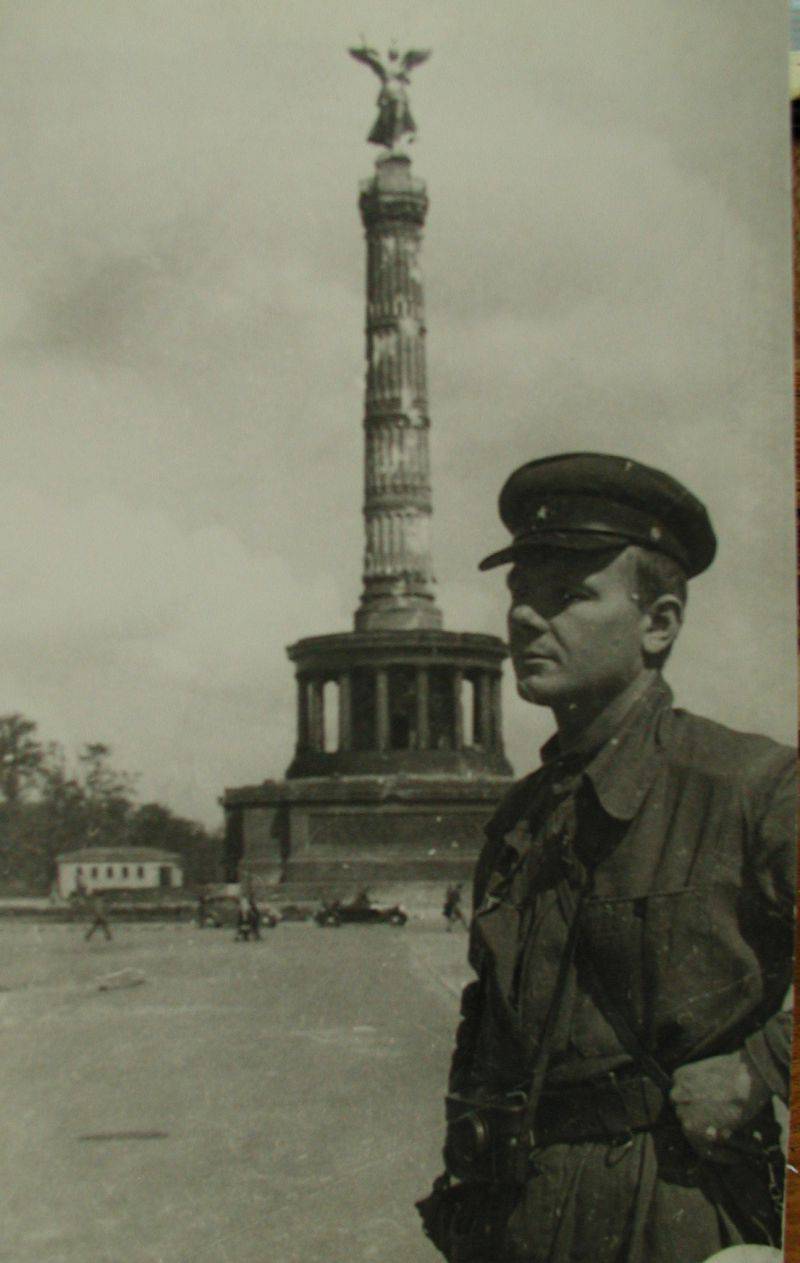
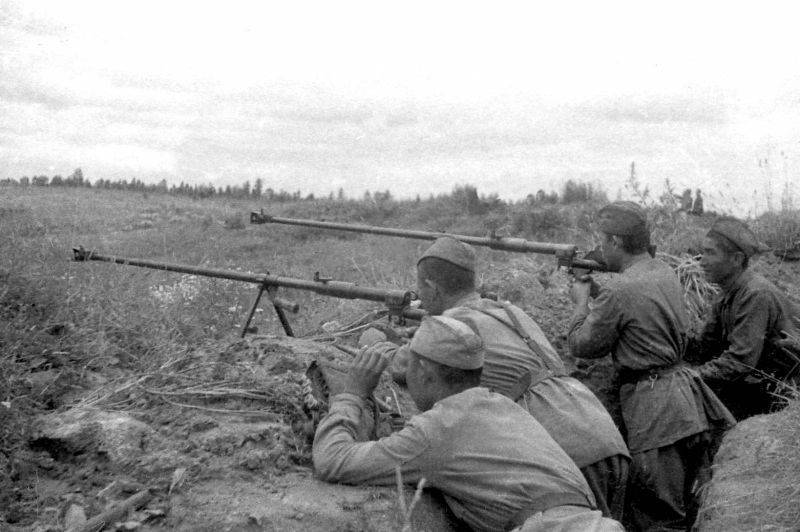
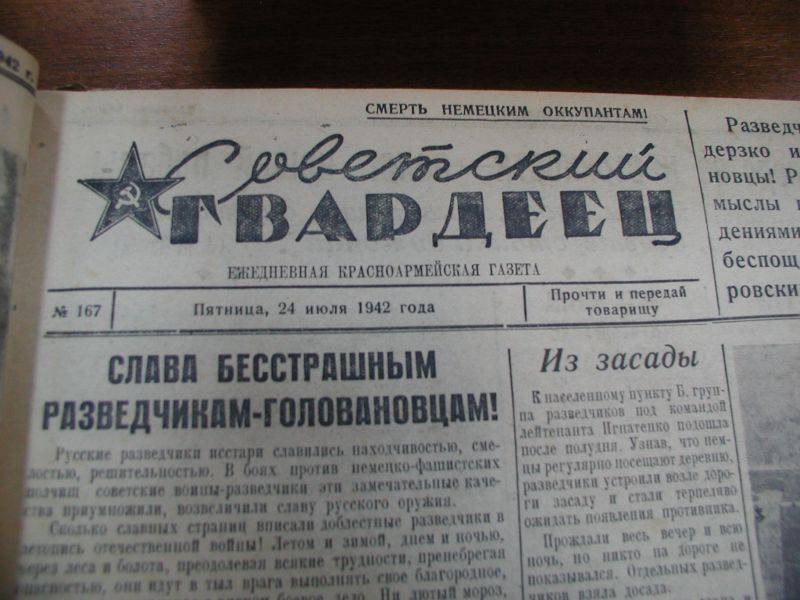
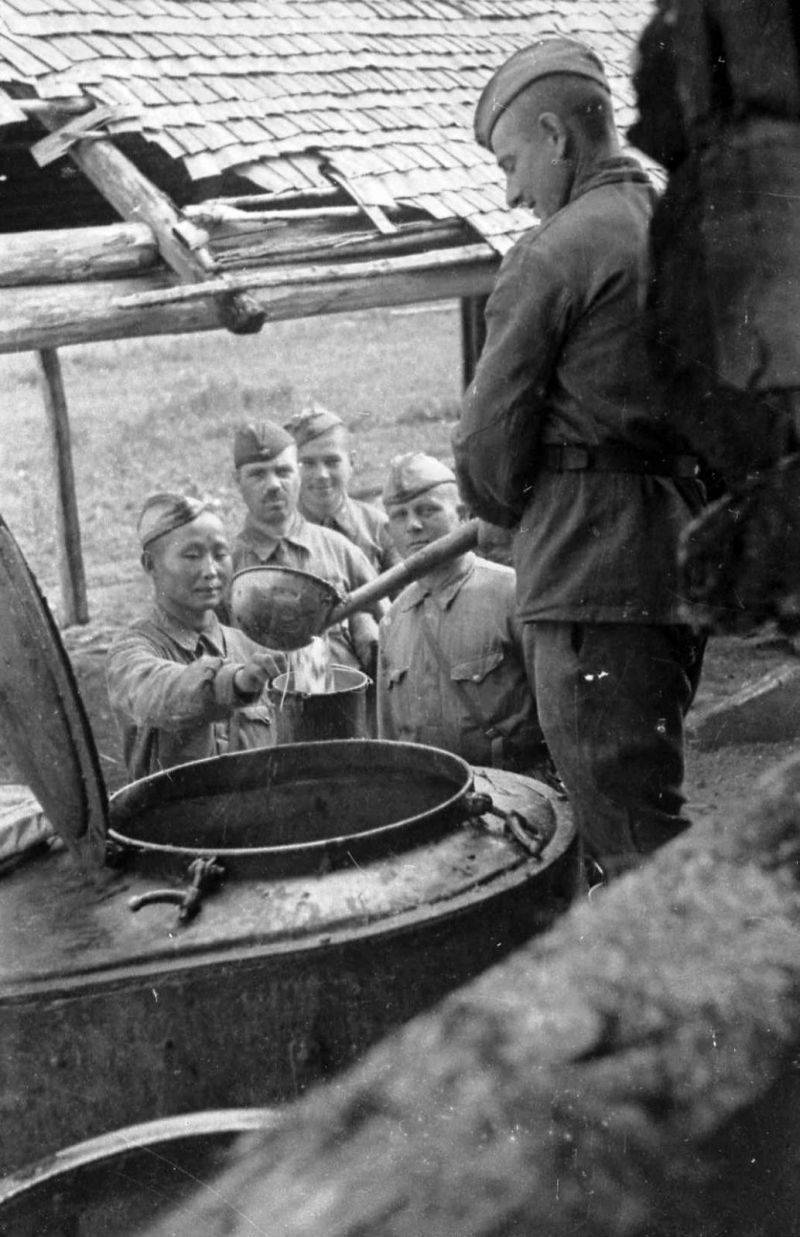
Information